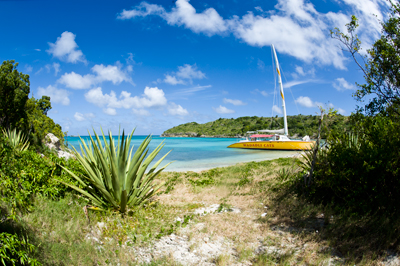 Cruising to the Caribbean on a luxury liner is a very different matter from travelling by dug-out canoe in Botswana's Okavango delta. A large bag of photographic equipment is not a problem on a cruise ship – at least once you have got it on board. It can remain in your cabin and be collected as required. However, a narrow and highly unstable canoe paddled in crocodile-infested waters is a different matter. Where there is a real risk of being tipped in the water, limit gear to the absolute minimum. Waterproof bags and cases can be worthwhile but may make life more difficult. Generally, just take a chance with an old camera body and hope for the best. Alternatively use a waterproof compact.
Cruising to the Caribbean on a luxury liner is a very different matter from travelling by dug-out canoe in Botswana's Okavango delta. A large bag of photographic equipment is not a problem on a cruise ship – at least once you have got it on board. It can remain in your cabin and be collected as required. However, a narrow and highly unstable canoe paddled in crocodile-infested waters is a different matter. Where there is a real risk of being tipped in the water, limit gear to the absolute minimum. Waterproof bags and cases can be worthwhile but may make life more difficult. Generally, just take a chance with an old camera body and hope for the best. Alternatively use a waterproof compact.
In small boats of all types the camera is close to the water so it is possible to photograph water-borne activity, wildlife and plants fairly close-up. Telephoto lenses are rarely practicable because they cannot be held steady. Tripods are of no use whatsoever - small craft are never sufficiently stable. Wide-angle lenses, such as those of focal length 16mm to 24mm, are useful if you want to include the boat and other passengers in the image. In zodiacs, inflatable rubber boats equipped with outboard motors, and other similar craft, it is possible to work from a small or medium camera bag covered in a plastic sheet. I have used this system from the Galapagos Islands to Antarctica without major problems.
On sailing yachts the craft is rarely level so hand-held work is the only real option. Spray is a hazard, particularly at sea, so use a waterproof camera. If you plan to be winched up the mast make sure you take all the necessary precautions. Motion is amplified many times high above deck and it is necessary to hang on tight. Your body and camera equipment may both suffer physical injury, but the angles are great.
Cruising on the Nile or one of the world's other major waterways is a much more tranquil experience. River boats are very stable when moving, and it may even be possible to use a tripod when moored with the engine turned off. Otherwise just hand-hold the camera while braced against a convenient part of the ship. Daylight is good and fast shutter speeds are generally possible.
Rough seas are difficult to cope with on any craft, but in small boats cameras must be waterproof and shutter speeds of 1/500sec or faster must be used. On large ships that are rolling or pitching, brace yourself against a railing and keep shutter speeds as fast as possible. Nevertheless, photographing albatross from the rear deck of a 3,000 ton ship in 40-foot seas in the Drake Passage, off Cape Horn,may still prove near impossible. The deck of a relatively small ship may roll plus and minus 30 degrees and rise and falling enough to leave one's lunch behind. One hand has to remain firmly on a railing to maintain balance. Under such circumstances, images may be possible only using autofocus – or, better still, auto everything!






